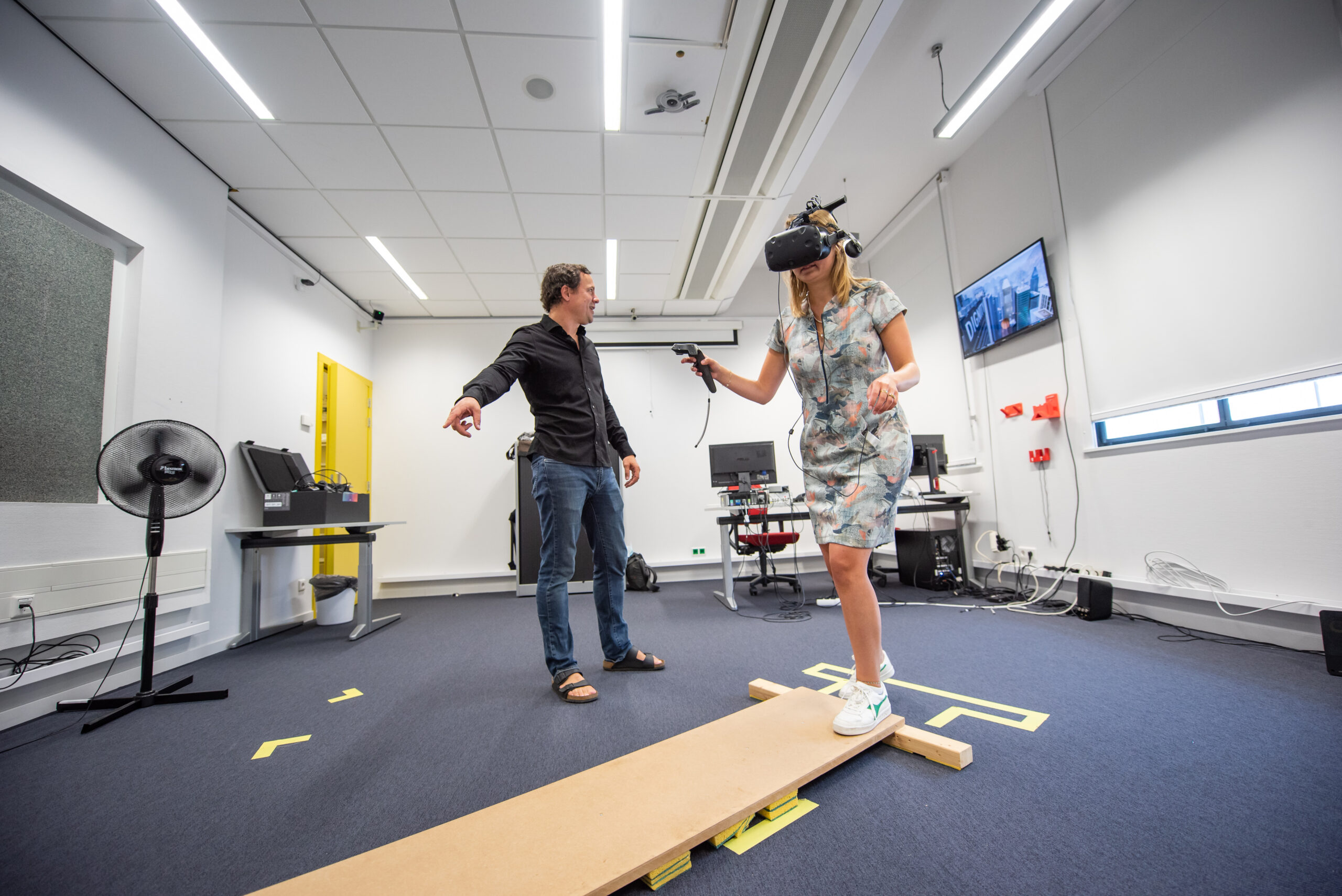
Grassroots: playground for ICT applications that improve education
Medical educators Franka Luk and Jacqueline Houting (Amsterdam UMC) have become true Grassroots innovators. In just two years, they developed a Serious Game for clinical reasoning and a Virtual Reality simulation that lets students experience psychosis, both now integral to clerkship training. Together with Psychiatry fellowship coordinator Ellen Bosnak, they are already working on their third project and recently secured the new Grassroots Scale Up grant. For them, Grassroots offers room to experiment, practical support, and the freedom to turn bold ideas into educational impact.
Curious about their journey and the ICT tools they created? Read their full story below.
Medical educators Franka Luk and Jacqueline Houting (Amsterdam UMC) are seasoned ‘Grassrooters’. In the past two years they have now completed two projects with a Grassroots grant. Together with Ellen Bosnak, coordinator of the Psychiatry fellowships, they worked on ICT applications for the Medicine Master’s program. They are currently working together on a third Grassroots project. Franka and Jacqueline developed, among other things, a Serious Game for clinical reasoning and a Virtual Reality simulation to experience psychosis. Both are now successfully used in teaching coassistents. Recently, they were also awarded the brand-new, larger Grassroots grant Scale up. Franka: “I have experienced Grassroots as a playground for ICT applications in education, with concrete improvements in education as a result.”
The benefits of Grassroots grants, according to Franka and Jacqueline:
- More freedom to develop your ideas and test your project.
- A Grassroots grant is easy to apply for, and practical in terms of guidance and feedback.
- You get to work independently and can ask for help at any time if needed.
More freedom
“You might have a nice idea for innovation in education; a Virtual Reality experience, for example, but these things cost money to realize. Without the Grassroots grant, we would have had to ask for funding within our department. First, the question would have been whether money was available. In addition, I suspect that if we had received money from the education funds, we would have been bound by more rules, and had less room to ‘play’. Being able to try out less and having to put more effort into reporting back regularly. While, the Grassroots organization leaves you quite free. Of course, what you do must be substantiated, but the great thing about the Grassroots grant is that it concerns pilot projects, which give you more freedom to develop your project, and to play and test out. There is more room to experiment without knowing the outcome of your project in advance.”
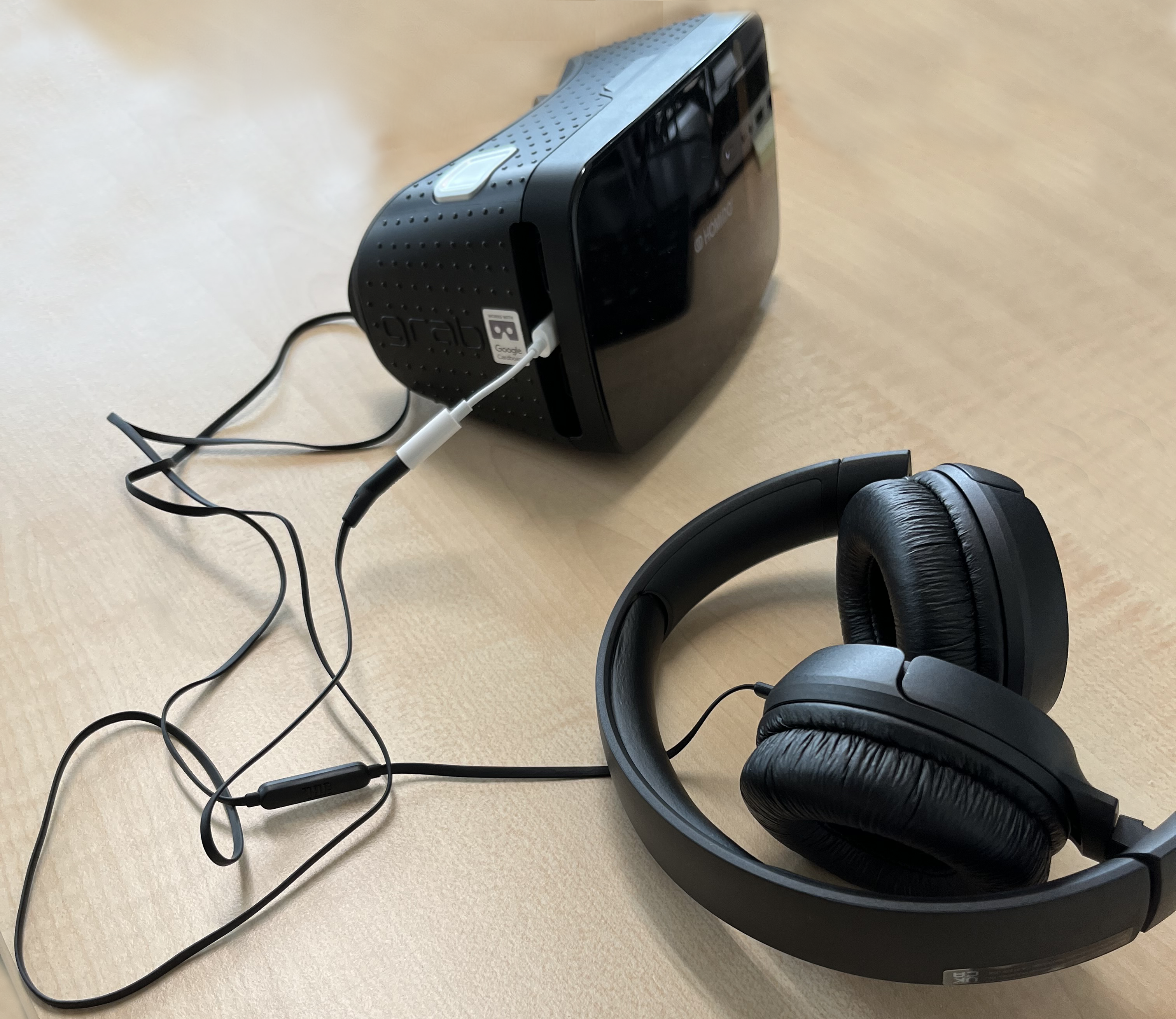
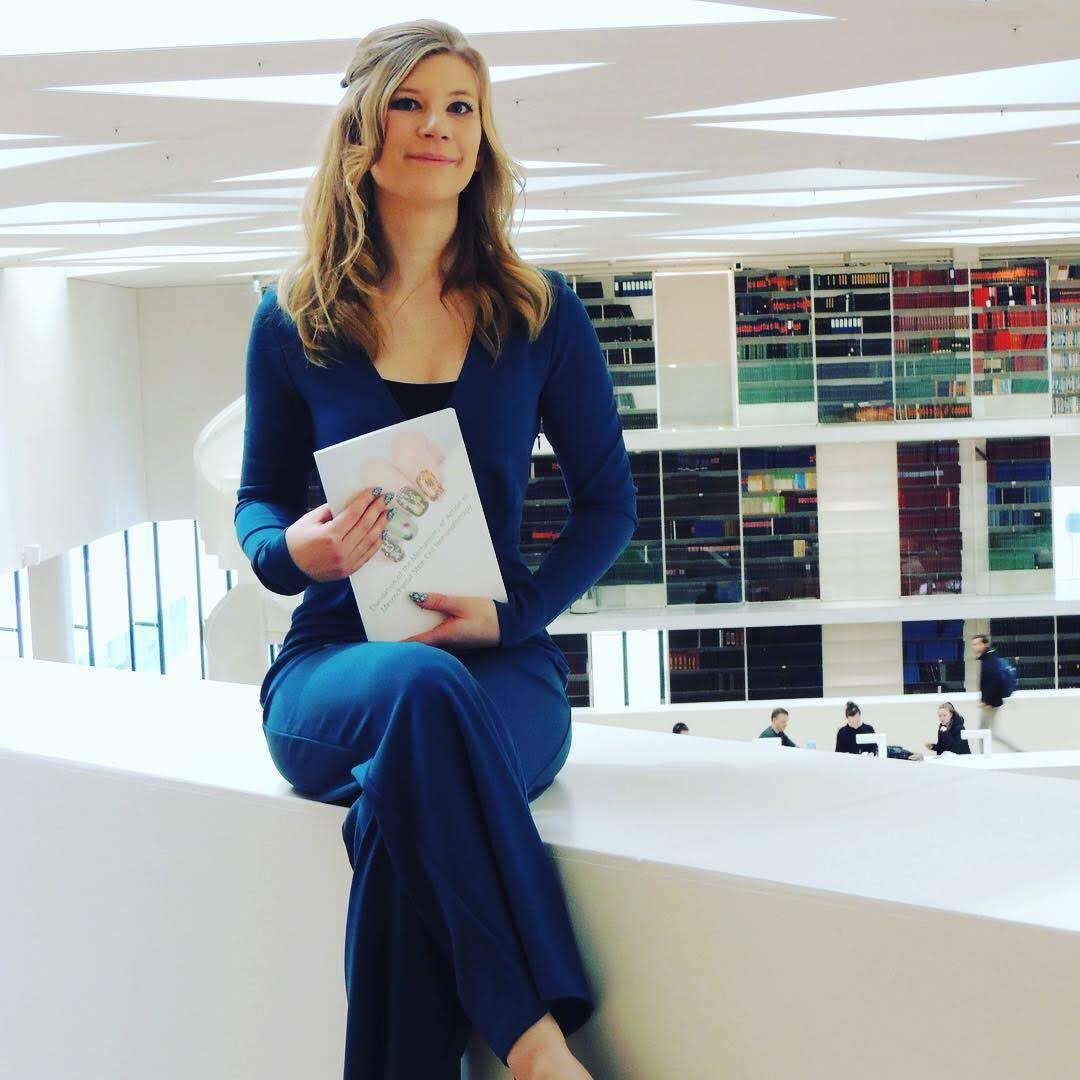
Accessible with something concrete at the end of the road
“With a Grassroots grant, you don’t end up in a pattern of, for example, having to provide an update every month about the status of your project. You only provide feedback at the end and that can be done orally; not necessarily with a report, allowing you to fully focus on your project. Applying via the application form isn’t complicated either. The application is not something that you have to worry about in advance. You do have to sit down for a few hours, and follow the steps given by the application form, but then it’s done. Moreover, the questions help to make your idea a more concrete one.”
“The nice thing about Grassroots projects is that they are small-scale, which means they’re easy to keep ahold of. The duration of a Grassroots trajectory is usually one year, although it can also be done in shorter time. All these factors combined makes it a very accessible trajectory. I would therefore definitely advise teachers to keep a close eye on the application deadline, and especially to go for it and apply if they have an idea. How nice is it when you get the grant, and with that, the opportunity to try something new? And at the end of the process, you will probably already have something substantial in your hands that can be directly applied in your educating. Our Grassroots projects have always led to concrete results that were fit for immediate use in education. We receive very enthusiastic reactions from teachers and students to our Serious Game and Virtual Reality simulation, which were developed with Grassroots money. Both ICT applications, together with the educational design surrounding these applications, improve our education and make it more activating.”
Work independently, and get help when needed
“The grant organization can help you out if you are unable to find a solution for something. But as long as you don’t have a request for help, you get to work independently, and try things out to progress step by step. We always had a reasonably clear plan and were able to work independently. Nevertheless, we did also ask for help from the organization, in which case they were very helpful in thinking about how we could raise certain issues higher up, for example. This allowed us to reinforce the need to purchase certain materials. As a result, we have been given permission to use that material.”
“There are no interim meetings with other Grassroots winners in which you keep each other informed of the developments within your project. However, there is a Teams channel for Grassroots winners. Here the projects teams do exchange experiences. There is also a possibility to present your project to new Grassroots winners, but you don’t have to. In all, the experience is rather free and relaxed.”
“During the process, the organization will occasionally contact you to ask how the project is progressing and whether you need any help. They think along with you. They also tipped us about the new Grassroots grant Scale up, which is really a very large grant of more than € 20,000. Thanks to that tip, we applied, and better yet, we have also received the grant!”
Serious game and casuistry
“Our first Grassroots project was to develop a serious game for teaching interns prior to their Psychiatry fellowship. The aim was that by playing this game, students can better prepare for ‘clinical reasoning’. We developed this interactive game by ourselves with the help of a doctor in training, who works at the Medicine Master’s degree, and who has an affinity with the development of serious games. He did the technical part. My colleague Jacqueline Houting also studied art and made the drawings for the game, in addition to her regular work.”
“The game shows that psychiatry is all around you in everyday life. In the serious game you see everything from the perspective of a student’s perspective; from behind, visually. You will see the student’s studying space. In the bookcase you can click on books, where titles from psychiatric literature appear.
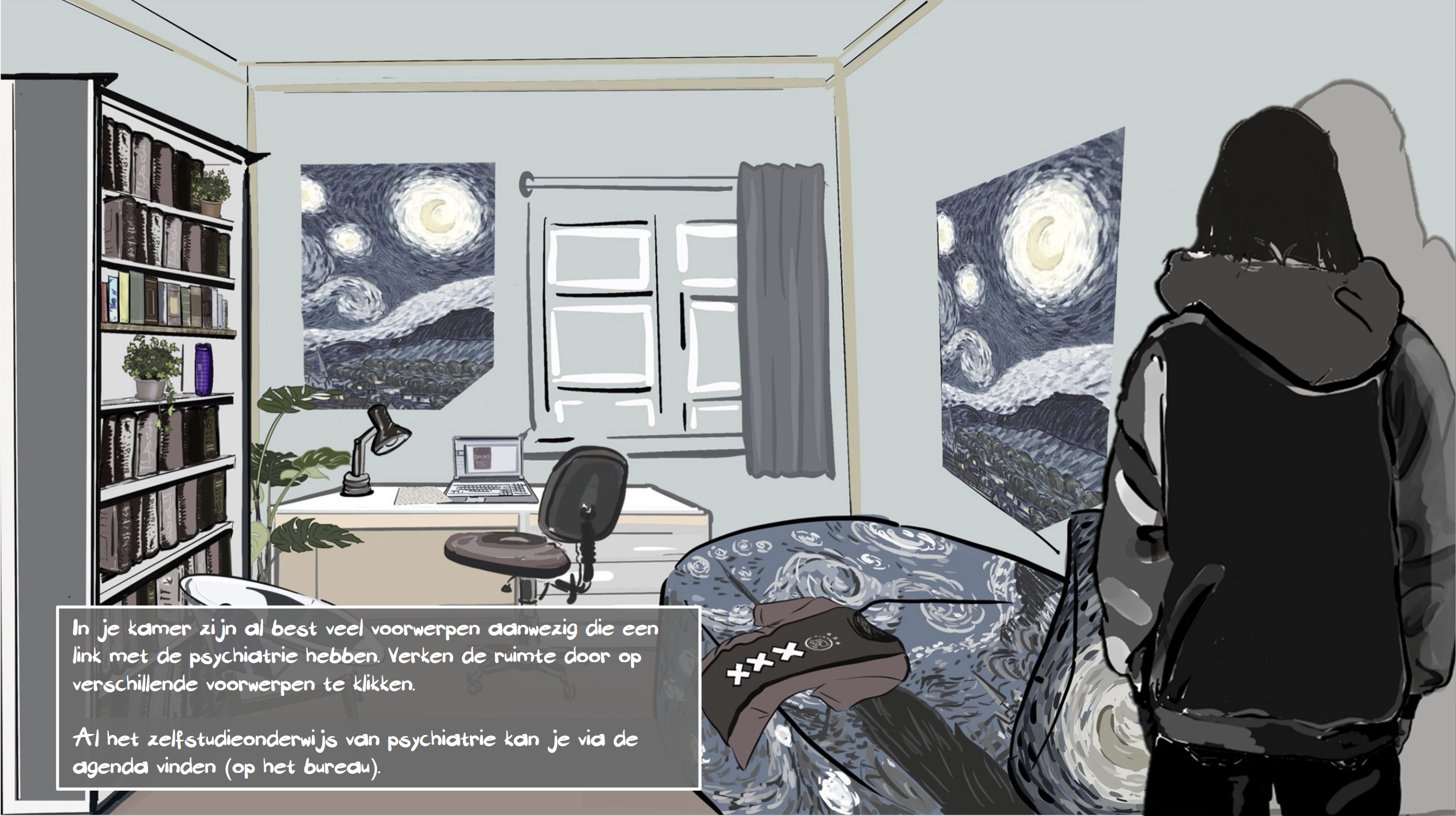
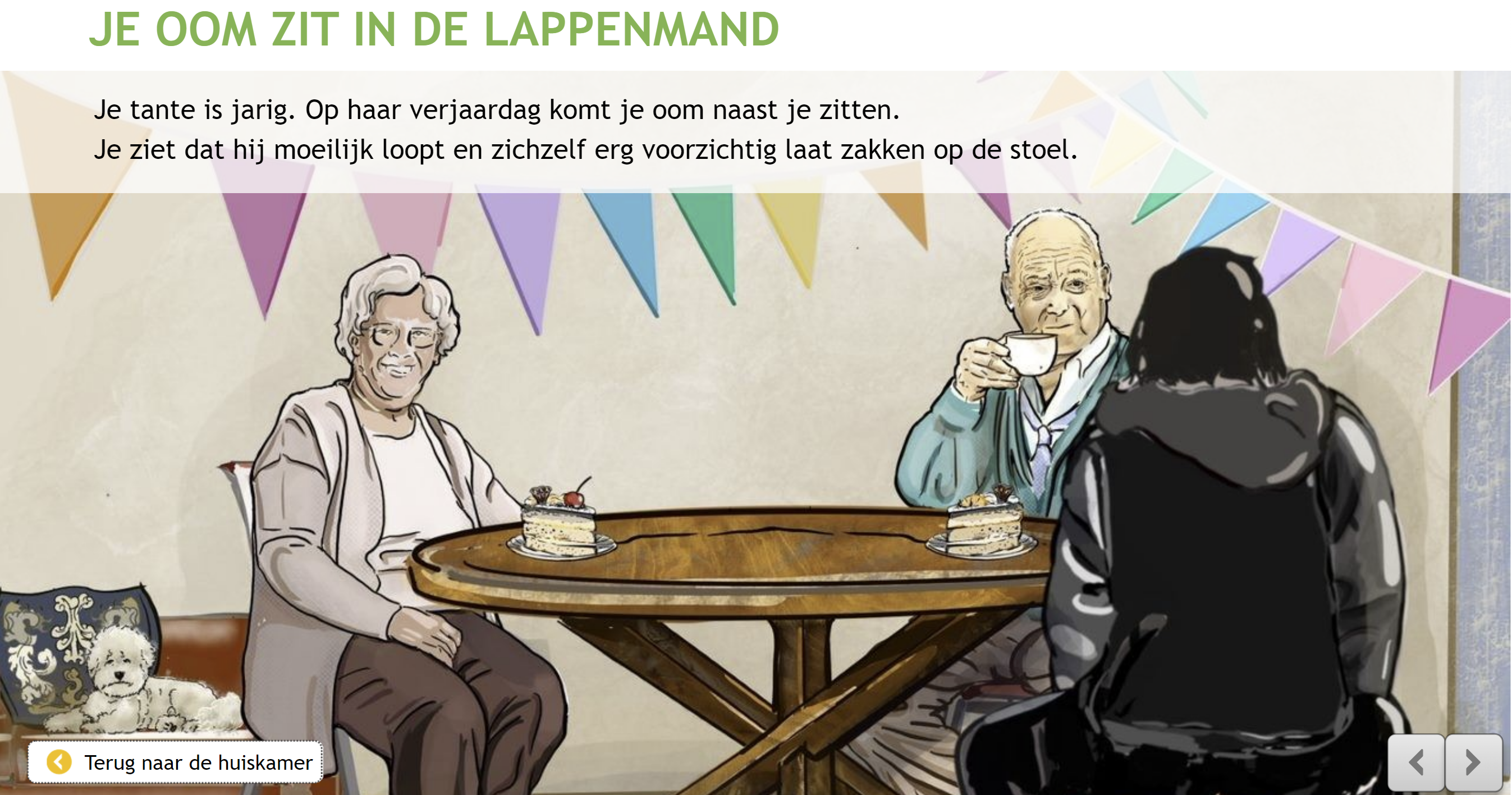
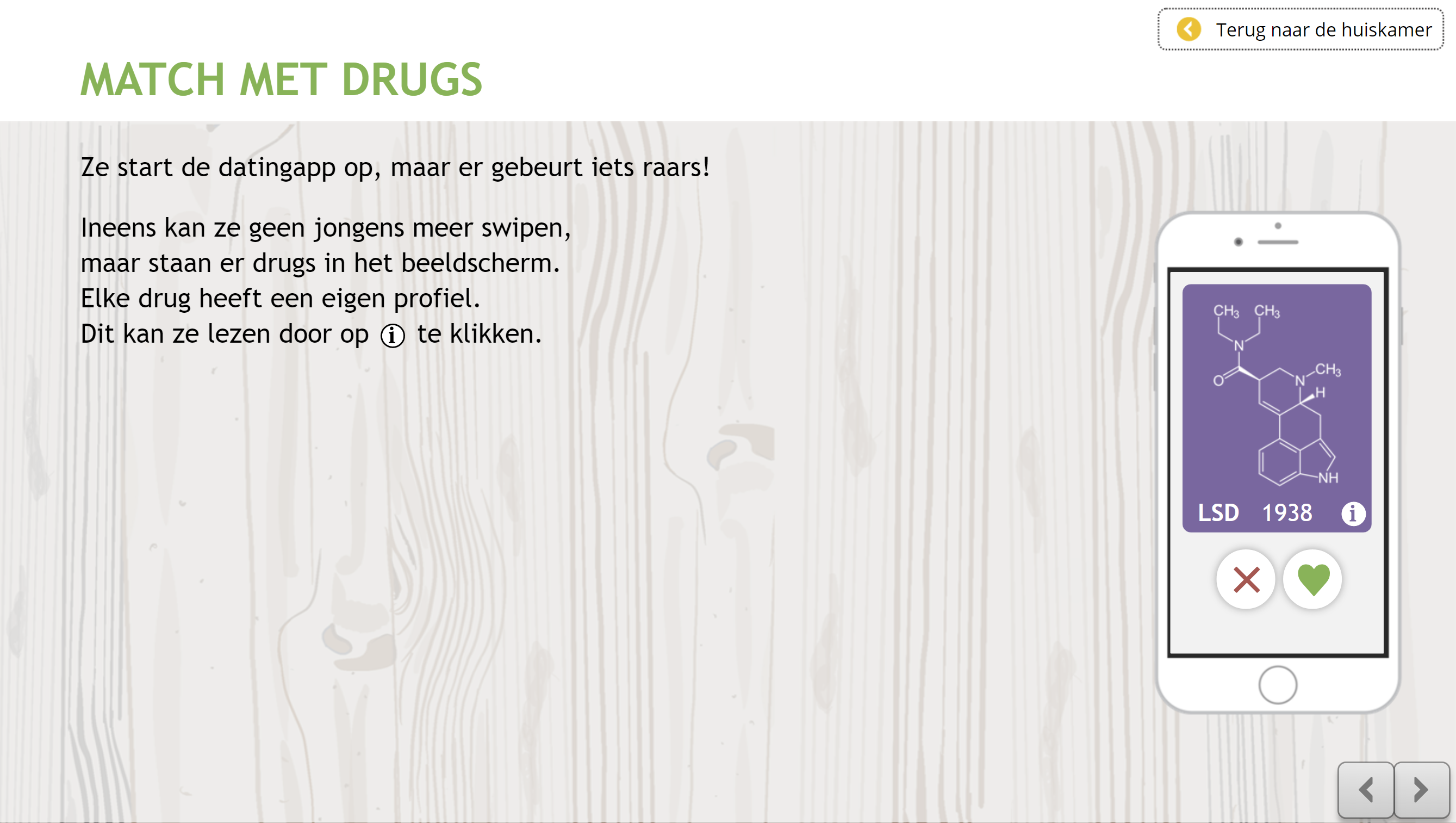
At the stereo, there’s a collection of music by artists who sing about mental problems. There’s a poster of Van Gogh on the wall, which when clicked gives a story about the suspected diagnosis of his mental state. On the desk you can find a ticket for the Museum of the Mind, a museum about psychiatry, in a building formerly known as the Dolhuys in Haarlem. There is also an agenda on the desk, where you can find narratives storytelling about cases; personal cases such as a friend’s grandmother, or a student’s girlfriend. In this way, the coassistent familiarize themselves with casuistry in a playful way. In the dining room you see the story of a friend who does not want to eat with you, where you suspect that she may have an eating disorder. In another living room, you notice certain behavior on a family birthday from a grandmother, who is probably demented, and so forth; all situations taken more or less from real life.”
“We had a year to set up this Grassroots project, and we succeeded. The money was spent on the technical development and design. This game was launched September 2021, at the start of the renewed revised Master’s programme.”
Virtual Reality simulation
“We have also developed education with a Virtual Reality experience, for the preparation of Psychiatry fellowships. Through the VR glasses, the student is immersed in a cinematic narrative in which reality is manipulated in such a way that it becomes comparable to the diverse subjective experiences endured during a psychosis. The VR experience allows the wearer to see and hear his or her everyday world, while at the same time being influenced by real-time semantic information layers and digital video and audio effects. The idea behind it is to decrease the stigma on psychosis and to increase understanding and empathy for someone in such a situation. Students experience for themselves how someone is, within in their own world, and how difficult it might be to level with others. As a result, they might also better learn to deal with a patient who is in such a situation. In a discussion with a psychologist, we discuss, among other things, what the experience was like and how you, as a healthcare professional, can best approach someone who is so caught up in his own world.”
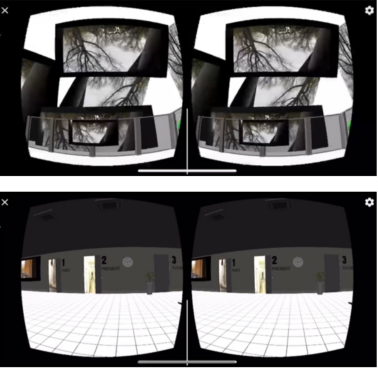
“This VR simulation app called ‘Labyrinth Psychotica, the wearable’ is developed by the artist Jennifer Kanary. The goal was to raise awareness among, for example, the police and healthcare personnel about how to approach people in a confused state. We have had this app converted slightly to adapt it to our needs. With the money from the Grassroots grant we bought the glasses, purchased a license to use the app and purchased ten iPhones. These phones do not have a SIM card to make calls, but only serve to run the VR program.”
“You put the phone in a holder and put it on your head. These together form the VR headset. Students practice in groups of three; one student experiences the psychosis, the other plays the role of a doctor trying to approach the confused person, and the third student keeps a general eye on everything and observes. The different roles rotate, so that eventually each student has experienced each role once. Teachers and students respond enthusiastically to these lessons. Most had not realized that someone with a psychosis has such a full head. Students often say that they wanted to respond, but that so much happened that it was made very difficult to do so. It is good not only to learn with your head, but also by feeling and experiencing, which can allow you to work with more empathy.”
VR Knowledge Center
“With a third Grassroots grant, we managed to set up a VR Knowledge Center. This has mapped out where Virtual Reality is being used in the AMC, both by teachers and healthcare staff. A lot is happening with VR, but the field is still very fragmented. People don’t always seem to know what they’re doing. By mapping out knowledge and material, teachers do not have to keep reinventing the wheel. They can first look up what knowledge and material is already available in-house. Perhaps it is possible to use that from each other. Moreover, it helps that you know who to turn to in case of questions or in planning, both practically and substantively. In the future, the platform will be available as a website, for the time being only for lecturers at Amsterdam UMC.”
Grassroots grant Scale up grant for setting up a VR expertise center
“With the Grassroots grant Scale up, which we have just been awarded, we will soon go one step further. It is not just about expertise and knowledge sharing, but we also want to really develop VR education together with teachers, to then guide them from an educational question/learning question to a developed product. We will also develop the VR experience together with them (free of charge). In addition, we can offer materials such as VR headsets on loan and manage and charge from one central point. Furthermore, we’d also like to find more connections with other faculties.
For the smaller Grassroots projects we received a smaller amount of money, without set development hours. This large Grassroots grant Scale up makes our larger project possible thanks to a ten times larger amount. As a result, there is time to spend on this project.”
More about the Grassroots grant and application
More about Franka Luk, Jaqueline Houting and Ellen Bosnak






